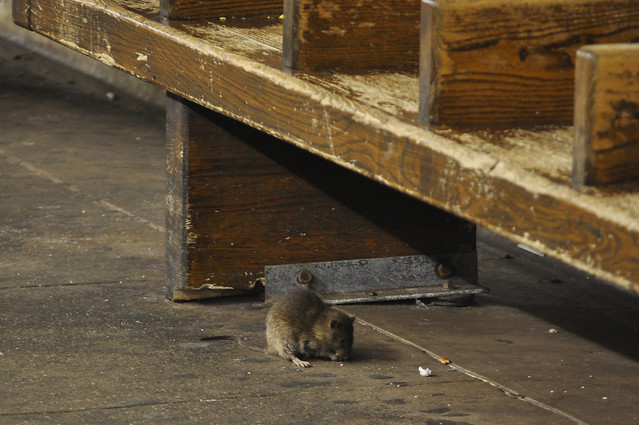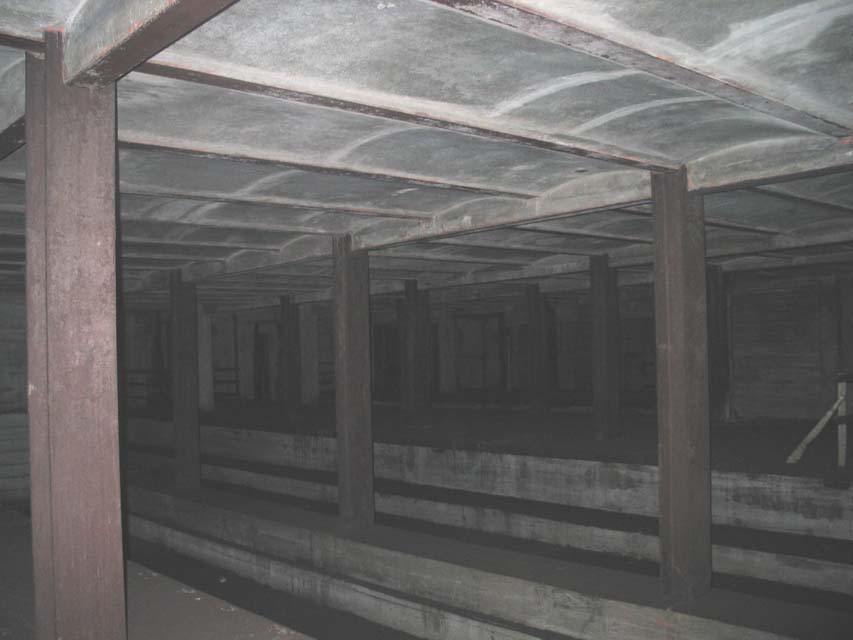
PATH's limited service in Manhattan doesn't make it a viable subway competitor.
Had the tunnel construction held up in the late 1870s, today’s PATH system would be the region’s oldest subway. But a series of construction mishaps, including a few fatal tunnel blowouts in 1880, shelved the plans for a New Jersey/New York underground train until work resumed in 1902. By 1911, the system as we know it today was in place, and for all intents and purposes, the New York City end of the PATH system has remained unchanged for 99 years.
Today, PATH is a small but vital part of the region’s transportation network. Its popularity seemingly peaked in the years before the Holland Tunnel opened as a transportation competitor, but the little railroad still carries over 250,000 passengers a day, most of whom are bound for the World Trade Center stop or one of the stations underneath 6th Ave.
The stations themselves resemble an alternative subway in New York City, and the vast majority of the city’s straphangers rarely have the need or opportunity to ride PATH. The routing in Manhattan after all covers just 1.4 miles and already runs where the subways go. (As a historical side note, the PATH tracks along 6th Ave. are in between the IND local tracks and above the express tracks. New York City had to build the independent 6th Ave. line around the preexisting PATH infrastructure.)
Yet, in today’s Times, Michael Grynbaum wonders if more commuters would be willing to turn to the PATH system come 2011. Why? Because of the fares. As Grynbaum relates, one trip on the PATH train costs just $1.75 while a pay-per-ride swipe of the MetroCard will cost over $2 even with the bulk discount next year. Those few folks riding from the village to Chelsea should imply take the PATH, he writes.
To the uninitiated, a ride on the PATH train might seem like stumbling into a Bizarro World subway. The familiar wooden benches of the subway station are replaced by curvy seats made from silver plastic. The ubiquitous security warning — “If You See Something, Say Something” — is rendered in PATHese: “You Call It In, We Check It Out.” The signage has a less graceful version of the subway’s Helvetica, and the Corinthian columns are painted an oddly vivid blue.
But regular riders say that PATH trains are more frequent, cleaner and quieter than subway trains. “Significantly less screeching,” said [Greenwich Village resident Casey] Smith, who, like many converts to PATH, stumbled upon the railroad months after moving into his neighborhood. In two years of daily rides on PATH, he said he had never waited longer than five minutes for a train.
It is difficult to measure how many PATH passengers ride the train solely within Manhattan, and officials at the Port Authority of New York and New Jersey, which operates the railroad, say that those customers have traditionally made up a small percentage of the railroad’s New Jersey-centric ridership. Dozens of riders can be spotted boarding Midtown-bound trains on weekday mornings at the PATH stations in Manhattan. With the price of a monthly MetroCard going up to $104 next year, longtime PATH riders say they expect to see more riders coming through the turnstiles of that railroad, where a 30-day pass costs $54.
New York City Transit officials were rightly dismissive of PATH’s potential competitiveness. “I don’t believe it’s ever been a concern,” MTA spokesperson Charles Seaton said to The Times.
It is romantic to think of a better-funded and somewhat more monder competitor to the MTA’s subway service, but the real problem is that the trains simply don’t go anywhere. “Dozens of riders” at one station represent just a fraction of the people who rely on the more extensive subway system, and by and large, people commuting from the village to West 33rd St. simply walk anyway. This isn’t a high-demand route. Now, if we want to talk about better integration between PATH and NYC Transit, that’s a different story altogether.





 “Scores Killed or Maimed in Brighton Tunnel Wreck,” screamed the
“Scores Killed or Maimed in Brighton Tunnel Wreck,” screamed the 